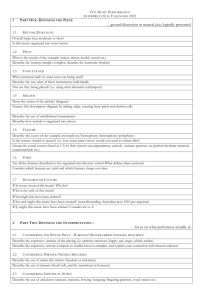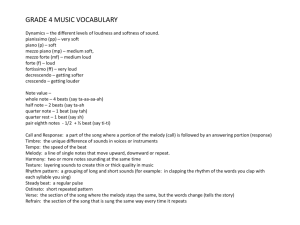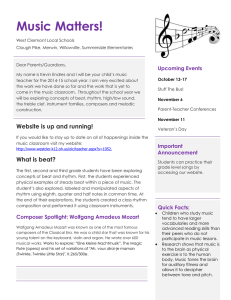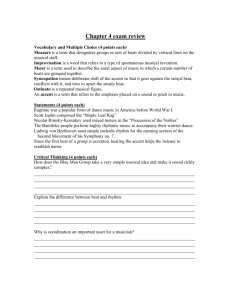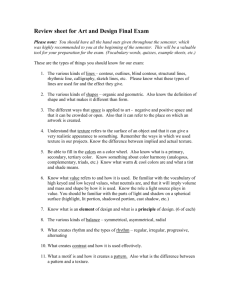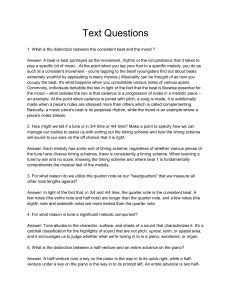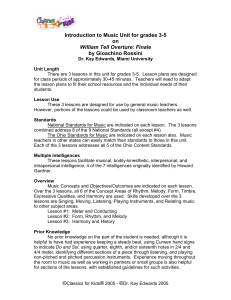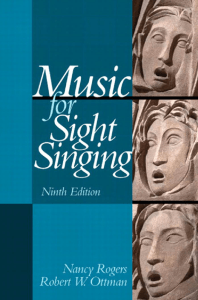Introduction to World Music in America
advertisement
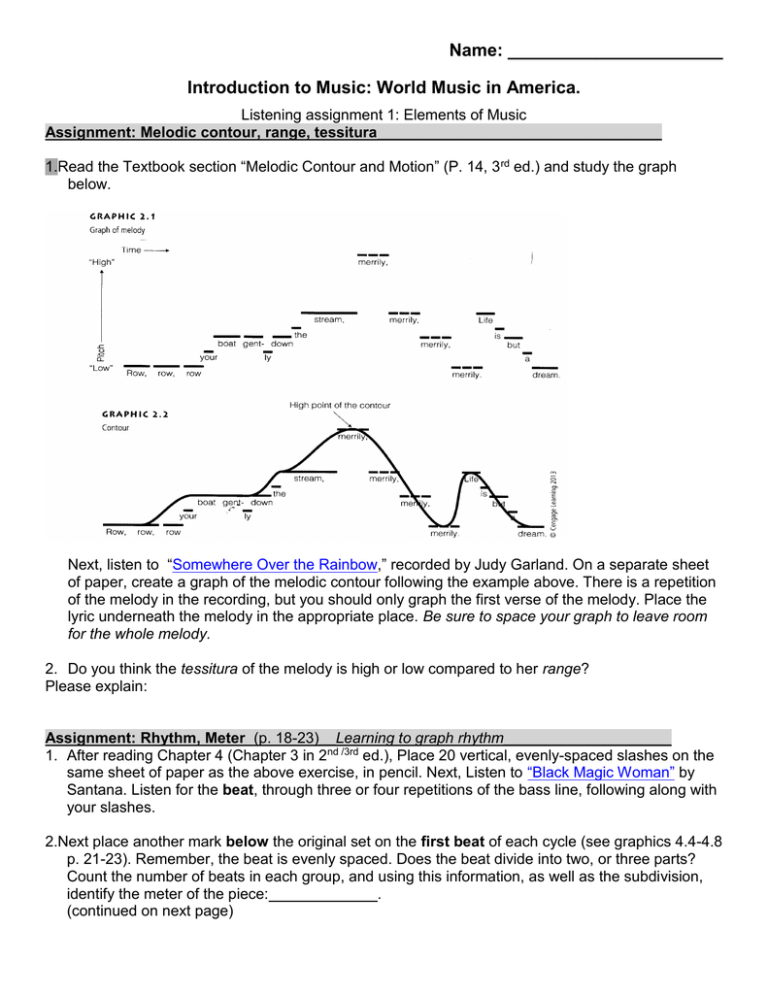
Name: ______________________ Introduction to Music: World Music in America. Listening assignment 1: Elements of Music Assignment: Melodic contour, range, tessitura__________________________________ 1.Read the Textbook section “Melodic Contour and Motion” (P. 14, 3 rd ed.) and study the graph below. Next, listen to “Somewhere Over the Rainbow,” recorded by Judy Garland. On a separate sheet of paper, create a graph of the melodic contour following the example above. There is a repetition of the melody in the recording, but you should only graph the first verse of the melody. Place the lyric underneath the melody in the appropriate place. Be sure to space your graph to leave room for the whole melody. 2. Do you think the tessitura of the melody is high or low compared to her range? Please explain: Assignment: Rhythm, Meter_(p. 18-23)__Learning to graph rhythm____________________ 1. After reading Chapter 4 (Chapter 3 in 2nd /3rd ed.), Place 20 vertical, evenly-spaced slashes on the same sheet of paper as the above exercise, in pencil. Next, Listen to “Black Magic Woman” by Santana. Listen for the beat, through three or four repetitions of the bass line, following along with your slashes. 2.Next place another mark below the original set on the first beat of each cycle (see graphics 4.4-4.8 p. 21-23). Remember, the beat is evenly spaced. Does the beat divide into two, or three parts? Count the number of beats in each group, and using this information, as well as the subdivision, identify the meter of the piece: . (continued on next page) 3.Above your beat markings, Mark the rhythm of the bass-line, using short or long horizontal slashes. Do this for four repetitions of the bass-line. You may also want to identify the subdivisions of the beat with lines (see Graphic 4.4, p. 21). Does the bass rhythm always fall regularly on the beat? Explain: Assignment: Texture (p. 24- 28)________________________________________________ Listening to each example below, describe their textures, explaining your answer. If you’re not sure, listen again to the audio examples from Part 1, and then describe what you hear for the examples below, even if you can’t name the texture–just do your best. Example 1: Texture: . Explain your choice: Example 2: Texture: . Explain your choice: Example 3: Texture: . Explain your choice: Assignment: Chapter 6, Musical Instruments (p. 29- 43)_________________________ Listen to the examples below, describing at least three instruments in each using the Hornbostel-Sachs instrument classification. For instance, if you hear an electric guitar, you would note that there is a chordophone of the fretted lute variety present, and that it is also an electrophone! Please also name the instrument in the vernacular-- “Electric guitar.” Choose different instruments for each example if possible. If you hear a wind instrument, name the classification and sub group, such as “aerophone, single reed,” for saxophone, etc. Again, just do the best you can! Example 1: C Jam Blues: Duke Ellington orchestra. Example 2: Concerto de Aranjuez, 2nd movement. Example 3: Hay Unos Ojos: Linda Ronstadt Staple pages of assignment (or print back-to back), as well as attached exercises to receive credit— no fancy folding or paper clips!
